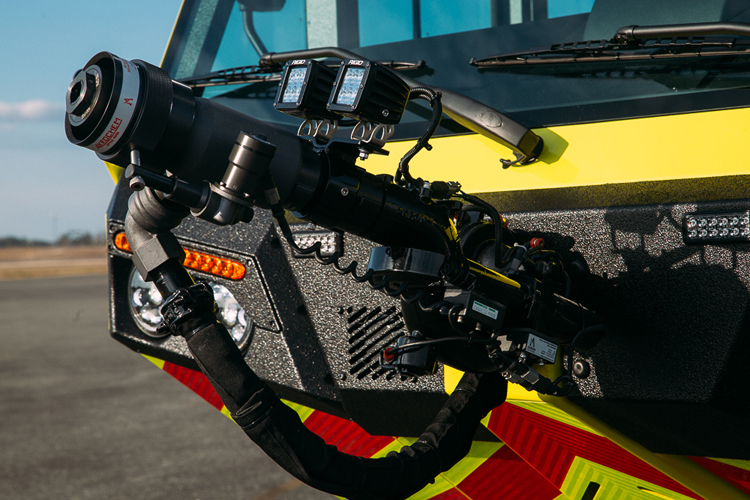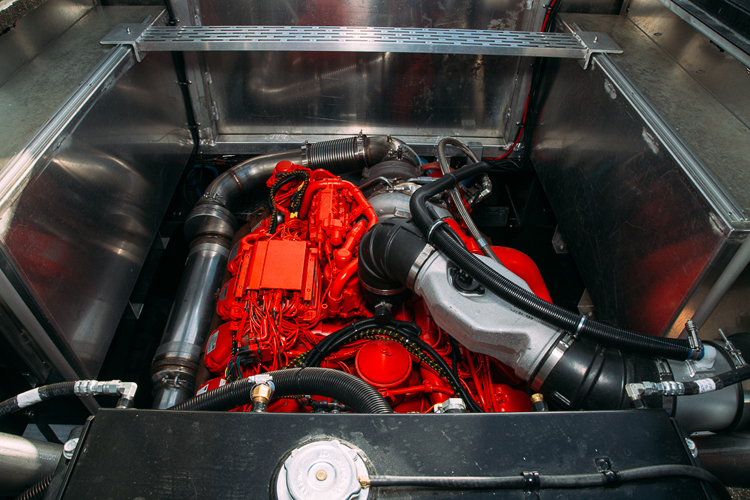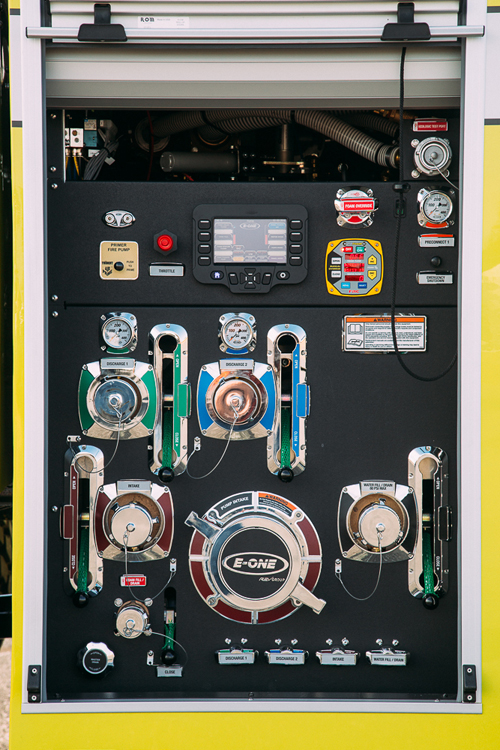
Aircraft rescue firefighting (ARFF) demands a lot of a crew. You’re often responding to an extremely hazardous scene. Firefighters could be exposed to explosion hazards, toxic fumes, and a variety of materials on scene. In these dangerous environments, your equipment choices matter. Ensuring you’re using apparatus that can handle the unique demands of ARFF is essential. Certain design aspects of ARFF vehicles stand out when looking for superior quality.

Increased Visibility
One critical aspect in responding to an aircraft crash is having a clear field of vision. E-ONE’s new TITAN cab has increased visibility tremendously with a lower windshield and by locating the driver position to sit lower and more forward. The forward slope of the windshield mimics the experience of sitting in the cockpit of a helicopter, allowing for a similar increased line of sight. This vantage point can lend greater situation awareness on scene.
A shorter dashboard design has positioned all the controls around the operator. This deliberate choice frees the driver from having to search around for things like actuation switches, and instead makes the controlling functions feel instinctive. This keeps the crew focused on their scene instead of distracted searching for controls.

Turret Location
Timing is everything in aircraft rescue and firefighting. Firefighters don’t have time to second-guess their actions or doubt their turret aim. The priority is to extinguish fire, provide an evacuation zone and cool the fuselage.
“You have less time or potentially catastrophic results occur, so [these circumstances] influenced the design thinking in developing this truck,” says E-ONE Product Manager Matt Reda.
With two front-mounted turrets, the placement of the roof mount is lower and forward to allow a better line of sight for the driver or operator to increase the accuracy of where they are applying the extinguishing agent. This advantage is important and allows the crew to focus on some of the other important aspects in applying extinguishing agent, like wind patterns and which technique is most appropriate for the situation (e.g., roll-on, bank-down, rainfall, or base of fire).

Engine Power
Three things can drive engine selection for an ARFF vehicle: standards for acceleration time, top speed, and emissions. E-ONE partners with Swedish manufacturer Scania, a leading manufacturer for engines. With two horsepower options available, both 670 and 770, E-ONE chose these engines for their ability to meet not only U.S. emissions standards, but also international ones, making it a truly global product. Scania has a solid reputation in the industry for their outstanding dealer and service network, making their engines well supported customer service and warranties.

Extended Storage Capacity
Any crew of firefighters must carry a lot of gear, which means they need vehicles outfitted with plenty of storage. The new E-ONE TITAN 4X4 has 360 cubic feet of usable storage space. ARFF crews have to be prepared to respond to a variety of incidents, requiring various types of equipment. Needing to store that much equipment means every inch of space matters. In designing the cab and body sections, a separate module is provided where the pump and plumbing exist to ensure all the available compartment space is accessible and truly usable without plumbing running through it.

Better Materials
With a proprietary design for the water and foam tanks, E-ONE has managed to reduce the weight and keep the highly desired non-corrosive nature of polypropylene material. This design allows for the same benefits of a lifetime warranty without sacrificing the look of the vehicle. A different design has in turn supported the desire to have more compartment space.
And More
Many elements factor into designing the ultimate ARFF vehicle. Although the previous list has made E-ONE ARFF vehicles a desired choice for many firefighters, there’s numerous things to love about their apparatus. In addition to considering things like storage space and engine performance, E-ONE also incorporated unique engine access at the rear and top deck. The new TITAN also has an integral rear access ladder design and a separate pump module, which allows for all that usable storage space. The firefighting controls themselves were designed to be intuitive for the driver. These features make E-ONE ARFF vehicles superior products continuing the tradition of innovation, since their first vehicle was built in 1982, to now being a global company committed to excellence and customer satisfaction.

